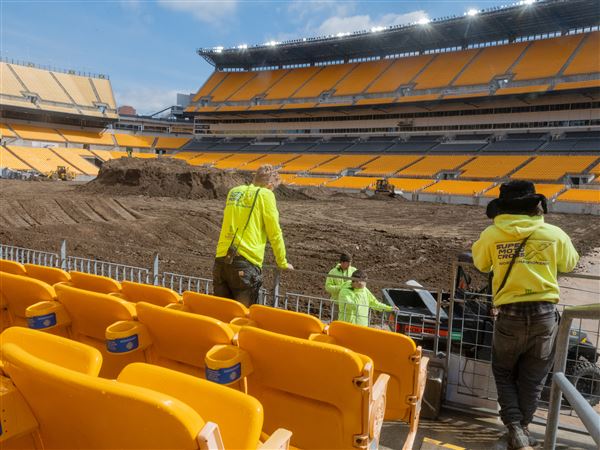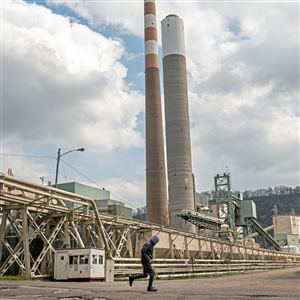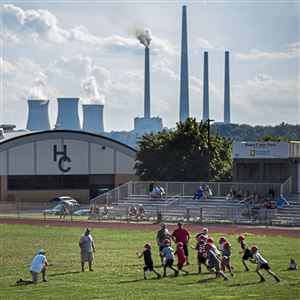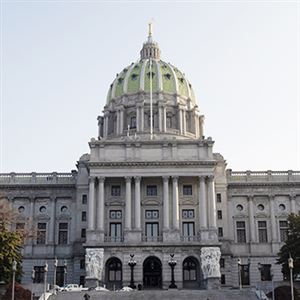An updated analysis from the Pennsylvania Department of Environmental Protection shows its proposed rule to establish a price and declining cap on carbon dioxide pollution from power plants will push down greenhouse gas emissions across the state and regional power grid through 2030.
The new modeling, which includes updated assumptions about factors like natural gas prices and electricity demand, estimates Pennsylvania’s participation in the Regional Greenhouse Gas Initiative should cut carbon dioxide emissions in the state by at least 97 million tons through 2030, compared to not joining the initiative.
The department released the results at the same time it released a final draft of the proposed rules, which received more than 14,000 public comments.
A majority of the comments favor Pennsylvania joining the multistate initiative as a way to combat climate change, but the proposal faces strong opposition from the General Assembly’s Republican majority, communities that are economically reliant on coal and building trade unions that maintain coal-fired power plants.
There were few major changes between the original and final drafts of the rules. Instead, DEP said the updated projections were heavily affected by outside factors, especially changes to the state’s alternative energy law that are expected to keep waste coal power plants running — and emitting carbon dioxide — through 2030, as well as new forecasts for lower electricity demand across the region and higher near-term natural gas prices.
Pennsylvania’s electricity sector has already seen a substantial drop in the amount of carbon it emits each year. The sector’s 2018 CO2 emissions were 51 million tons lower than they were in 2010, according to the U.S. Energy Information Administration, largely because new power plants running on cheap natural gas forced coal plants out of the market.
Under the Regional Greenhouse Gas Initiative, known as RGGI, Pennsylvania’s annual power sector emissions in 2030 will be capped 20 million tons lower than 2022 levels. But the new modeling results show actual reductions should be greater than the budgeted decline, ranging from 97 million to 227 million tons avoided between now and 2030.
“All the modeling scenarios confirm significant avoided CO2 emissions for Pennsylvania as a result of this program,” Allen Landis, a member of DEP’s RGGI program development team, told the state’s air quality advisory board on Monday.
DEP’s previous modeling showed a larger carbon emissions benefit from Pennsylvania joining the program, with a 183 million ton reduction in Pennsylvania through 2030, but that analysis began in 2019 rather than 2021.
The new modeling predicts few of the state’s conventional coal power plants will remain operating past 2025, whether Pennsylvania establishes a carbon price or not. Unlike an earlier analysis, which showed a sharp drop off in coal generation starting as soon as Pennsylvania is expected to join the program in 2022, the new modeling predicts a more gradual decline in coal power over the program’s first three years.
After 2025, with or without the carbon-cutting program, nearly all of Pennsylvania’s remaining coal-fired power is expected to come from plants that run on waste coal that was left in heaps from legacy mines. Those plants, which the state considers environmentally beneficial, will generally not have to pay for their carbon emissions.
The carbon-cutting program is expected to have a relatively small effect on natural gas power generation, Mr. Landis said. In most years, the program is expected to reduce gas-fired generation by less than 10% compared to business as usual.
The program is expected to raise wholesale power prices by between 1% and 4% through 2030. For an average residential electric customer, that would mean paying between $0.84 and $2.70 more a month, depending on whether they use electricity for heat. Those estimates do not include the drop in electricity prices expected to come when money from the program is invested in energy efficiency upgrades for homes and businesses.
Critics of the proposed rule say too many of the carbon emissions that will be avoided in Pennsylvania will be erased by higher emissions in other states in the regional PJM electric grid that don’t belong to the carbon-cutting alliance.
DEP’s new modeling shows the PJM region will emit 28 million fewer tons of CO2 through 2030 if Pennsylvania joins the carbon-cutting program than if it doesn’t. The regional benefit is smaller than the state benefit because some coal and gas power plants in non-RGGI states, like Ohio and West Virginia, are expected to run more as Pennsylvania plants run less.
Mr. Landis said DEP is aware of the effect, known as leakage, and regional and federal conversations are underway to address it. The modeling does not account for any of those efforts.
One change between the proposed and final drafts of the rule is the inclusion of an annual air quality impact assessment, which will track whether the program increases emissions in some locations even as it cuts emissions elsewhere. That kind of shifting has been a concern in other carbon cap-and-trade programs because low-income and minority communities often bear the burden of increased pollution when it occurs.
“We don’t think that is going to really happen,” said Krishnan Ramamurthy, DEP’s deputy secretary for air programs. “In fact, you are going to have a beneficial aspect rather than a disproportionate impact. But, nevertheless, I think the evaluation will at least dispel some of the fears.”
Another change in the final draft establishes quarterly carbon allowance budgets for 2022, in case Pennsylvania does not join the carbon initiative by Jan. 1, 2022, as planned. The change will ensure if the regulatory review process is drawn out — which is likely, given Republican lawmakers’ opposition to the program — Pennsylvania would not have to wait a whole extra year to join the initiative.
Laura Legere: llegere@post-gazette.com.
First Published: May 18, 2021, 9:18 a.m.



















